Here is a list of nutrients from plants.
Each item listed weighs 100g.
Nutrient / Calories per 100g / Ratio of Calories:Nutrient
Lists are in order of lowest calorie density to highest calorie density per gram of nutrient.
Table of Contents
Calcium
Estrogen & Testosterone
Fat, Unsaturated
Fiber
Iron
Magnesium
Omega-3
Pantothenic Acid, Vitamin B5
Potassium
Protein
Selenium
Sodium
Vitamin D
Vitamin B-12
Zinc
Calcium (found in fortified Baby Calf Growth Formula aka Milk)
Vital to the health of the muscular, circulatory, and digestive systems.
Builds bone and supports synthesis and function of blood cells.
Regulates the contraction of muscles, nerve conduction, and the clotting of blood.
Calcium – Biological and Pathological Role
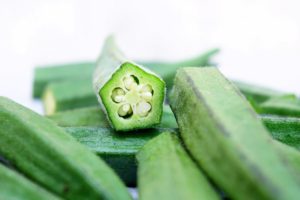
Daily Value = 1000mg
| Rank | Food | Calcium Daily Value | Calories | Ratio of Calories to 1% of Daily Value |
|---|---|---|---|---|
| Vegetables | ||||
| 1 | Spinach | 10% | 23 cal. | 2.3:1 |
| 2 | Celery | 4% | 16 cal. | 4 |
| 3 | Okra | 8% | 33 cal. | 4.12 |
| 4 | Broccoli | 5% | 34 cal. | 6.8 |
| 5 | Lettuce | 2% | 14 cal. | 7 |
| 6 | Butternut Squash | 5% | 45 cal. | 9 |
| 7 | Rutabaga | 4% | 37 cal. | 9.25 |
| 8 | Turnips | 3% | 28 cal. | 9.33 |
| 9 | Brussels Sprouts | 4% | 43 cal. | 10.75 |
| 10 | Carrots | 3% | 86 cal. | 13.66 |
| 11 | Sweet Potato | 3% | 86 cal. | 21.5 |
| 12 | Lima Beans | 3% | 113 cal. | 37.66 |
| Rank | Food | Calcium Daily Value | Calories | Ratio of Calories to 1% of Daily Value |
| Fruits | ||||
| 1 | Lemons | 3% | 29 cal. | 9.66:1 |
| 2 | Limes | 3% | 30 cal. | 10 |
| 3 | Oranges | 4% | 47 cal. | 11.75 |
| 4 | Blackberries | 3% | 43 cal. | 14.33 |
| 5 | Strawberries | 2% | 32 cal. | 16 |
| 6 | Raspberries | 3% | 52 cal. | 17.33 |
| 7 | Kiwi | 3% | 61 cal. | 20.33 |
| 8 | Grapefruit | 1% | 32 cal. | 32 |
| 9 | Persimmons | 1% | 70 cal. | 70 |
Estrogen & Testosterone
Promotes the development of female secondary sexual characteristics, such as breasts, and are also involved in the thickening of the endometrium and other aspects of regulating the menstrual cycle. In males, estrogen regulates certain functions of the reproductive system important to the maturation of sperm.[19][20][21]
Estrogen – Biological Function
Testosterone is necessary for normal sperm development.
Testosterone – Biological Function
All plants that contain nutrients will help maintain proper levels of estrogen and testosterone in both men and women
Animal Proteins (meat, eggs, dairy) lower testosterone levels and contain synthetic estrogen.
Estrogen in Meat, Dairy, and Eggs (video)
Skim Milk and Acne (milk contains estrogen) (video)
Alcohol raises estrogen levels (video)
Scientific Study: Vegan Men Have More Testosterone
Scientific Study: Vegan Men Have More Testosterone PDF
Fat, Unsaturated
Replacing saturated fats with unsaturated fats helps lower levels of total cholesterol and LDL cholesterol in the blood.[1]
The United States Food and Drug Administration (FDA) recommendation states that the amount of unsaturated fat consumed should not exceed 30% of one’s daily caloric intake.[citation needed]
Monounsaturated fat is healthier because it increases daily physical activity and resting energy expenditure. It also leads to less anger and irritability. Polyunsaturated fat has been shown to increase risk of atherosclerosis (heart disease).[2]
Unsaturated Fat – Chemistry and Nutrition
Monounsaturated Fat – Relation to Health

Unsaturated fat especially monounsaturated fat is good fat as long as you are eating it while it is still inside a whole food like an Avocado but if you are consuming Olive Oil and not the whole Olive it is bad fat.
Olive Oil and Artery Function (video)
| Rank | Food | Unsaturated Fat (grams) | Calories per 100g | Ratio of Calories to 1 gram of Unsaturated Fat |
|---|---|---|---|---|
| 1 | Avocado | 11.62g | 160 cal. | 13.76:1 |
| 2 | Nuts & Seeds | 35.16g | 574 cal. | 16.32 |
| 3 | *Olives | 9.28g | 116.9 cal. | 12.59 |
| 4 | Peanut Butter | 32.06g | 588 cal. | 18.34 |
*High Sodium 1000mg (You can get reduced sodium olives.)
Back to Table of ContentsFiber
Increases food volume without increasing caloric content.
Attracts water and forms a viscous gel, slowing the emptying of the stomach and intestines, lowers blood sugar.
Lowers total and LDL cholesterol, which may reduce the risk of cardiovascular disease.
Dietary Fiber – Effects of Fiber Intake
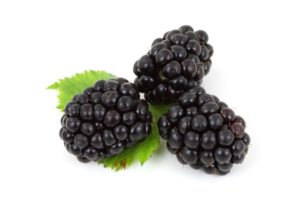
Recommended Daily Value: 38g
| Rank | Food | Fiber (grams) | Calories per 100g | Ratio of Calories to 1 gram of Fiber |
|---|---|---|---|---|
| 1 | Bran (wheat, rice, oats, corn) (fiber one cereal) | 47.5g | 200 cal. | 4.21:1 |
| 2 | Blackberries | 5.3g | 43 cal. | 8.11 |
| 3 | Asparagus | 2.1g | 20 cal. | 9.52 |
| 4 | Cranberries | 4.6g | 46 cal. | 10 |
| 5 | Celery | 1.6g | 16 cal. | 10 |
| 6 | Cabbage, Green | 2.5g | 25 cal. | 10 |
| 7 | Spinach | 2.2g | 23 cal. | 10.45 |
| 8 | String Beans (green beans) | 2.7g | 31 cal. | 11.48 |
| 9 | Cauliflower | 2g | 25 cal. | 12.5 |
| 10 | Beans, Pinto | 5.38g | 69.23 cal. | 12.86 |
| 11 | Cabbage, Chinese (bok choy) | 1g | 13 cal. | 13 |
| 12 | Kale | 3.6g | 49 cal. | 13.61 |
| 13 | Broccoli | 2.6g | 34 cal. | 13.07 |
| 14 | Squash, Summer, Yellow | 1.1g | 16 cal. | 14.54 |
| 15 | Cabbage, Red (Purple) | 2.1g | 31 cal. | 14.76 |
| 16 | Beets | 2.8g | 43 cal. | 15.35 |
| 17 | Turnips | 1.8g | 28 cal. | 15.55 |
| 18 | Beans, Black | 5.38g | 84.61 cal. | 15.72 |
| 19 | Beans, Chickpeas Garbanzo | 5.38g | 84.61 cal. | 15.72 |
| 20 | Strawberries | 2g | 32 cal. | 16 |
| 21 | Pears | 3.1g | 57 cal. | 18.38 |
| 22 | Orange | 2.4g | 47 cal. | 19.58 |
| 23 | Popcorn (1 cup) | 0.8g | 16 cal. | 20 |
| 24 | Apples | 2.4g | 52 cal. | 21.66 |
| 25 | Mushrooms | 1g | 22 cal. | 22 |
| 26 | Squash, Winter | 1.5g | 34 cal. | 22.6 |
| 27 | Blueberries | 2.4g | 57 cal. | 23.75 |
| 28 | Peaches | 1.5g | 39 cal. | 26 |
| 29 | Sweet Potatoes with Skin | 3g | 86 cal. | 28.66 |
| 30 | Bananas | 2.6g | 89 cal. | 34.23 |
| 31 | Potatoes with Skin | 2.2g | 77 cal. | 35 |
| 32 | Oatmeal | 1.7g | 62 cal. | 36.47 |
| 33 | Pumpkin | 0.5g | 26 cal. | 52 |
| 34 | Brown Rice, cooked | 1.8g | 185 cal. | 102.77 |
| 35 | Cashews, dry roasted, without salt | 3g | 574 cal. | 191.33 |
Iron
It is the most important transition metal in all living organisms.[138]
The main roles of iron-containing proteins are the transport and storage of oxygen, as well as the transfer of electrons.[138]
Iron – Biological and Pathological Role
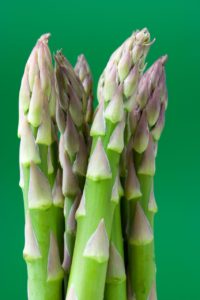
Recommended Daily Value:
Men 8mg/day
Women 19 to 50: 18mg/day
Women 51 and older: 8mg/day
Warning: DO NOT take iron in the form of a supplement unless you have an iron deficiency because it causes cancer. Iron from animal products also causes cancer. Iron from plants is regulated by the human body.
Risk Associated with Iron Supplements (video)
| Rank | Food | Iron Daily Value | Calories per 100g | Ratio of Calories to 1% of Daily Value |
|---|---|---|---|---|
| 1 | Spinach | 15% | 23 cal. | 1.53:1 |
| 2 | Asparagus | 12% | 20 cal. | 1.66 |
| 3 | Cacao Powder (dark chocolate powder) | 60% | 400 cal. | 6.66 |
| 4 | Beans | 7.69% | 69.23 cal. | 9 |
| 5 | Tofu | 7% | 84 cal. | 12 |
| 6 | Silk Light Vanilla, soymilk | 2% | 33 cal. | 16.5 |
| 7 | Nuts - Cashew | 33% | 574 cal. | 17.39 |
| 8 | Squash and Pumpkin Seeds | 18% | 446 cal. | 24.77 |
Magnesium
Important for many processes in the body, including regulating muscle and nerve function, blood sugar levels, and blood pressure and making protein, bone, and DNA.
Magnesium – Fact Sheet for Consumers
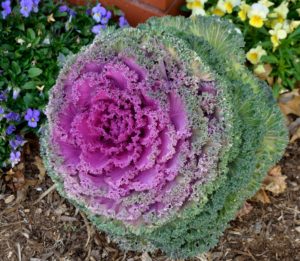
Recommended Daily Value:
Men 19-30: 400mg
Men 31+: 420mg
Women 19-30: 310mg
Women 31+: 320mg
| Rank | Food | Magnesium Daily Value | Calories per 100g | Ratio of Calories to 1% of Daily Value |
|---|---|---|---|---|
| 1 | Spinach (Swiss Chard, Kale, Collards, Turnip Greens) | 20% | 23 cal. | 1.15:1 |
| 2 | Beans and Lentils (White Beans, French Beans, Black-eye Peas, Kidney Beans, Chickpeas, Lentils, Pinto Beans) | 13% | 90 cal. | 6.92 |
| 3 | Nuts and Seeds | 65% | 574 cal. | 8.83 |
| 4 | Whole Grains (Quinoa, Millet, Bulgur, Buckwheat, Wild Rice, Whole Wheat Pasta, Barley, Oats) | 33.33% | 377 cal. | 11.33 |
| 5 | Bananas | 7% | 89 cal. | 12.71 |
| 6 | Avocados | 7% | 160 cal. | 22.85 |
Omega-3
Omega-3 and omega-6 fatty acids are important in the normal functioning of all tissues of the body.
Deficiencies in these fatty acids lead to a host of symptoms and disorders including abnormalities in the liver and the kidneys, reduced growth rates, decreased immune function, depression, and dryness of the skin.
Essential Fatty Acids
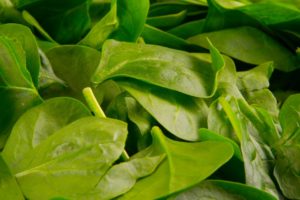
Ratio of Omega 3:Omega 6
This list shows the best plant sources of Omega-3 for the complete list see Ratio of fatty acids in different foods . It shows the ratio of Omega 6:Omega 3.
To date, “no one knows what the optimal ratio in the diet is for these two families of fats.”[4] Susan Allport writes that the current ratio in Japan is associated with a very low incidence of heart and other diseases. A dietary ratio of 1:4 produces almost a 1:1 ratio of highly unsaturated fatty acids (HUFAs) in cell membranes.”[4]
Andrew Stoll, who advocates the consumption of the two fats in a 1:1 ratio, states, “Once in the body, omega-3 and omega-6 fatty acids follow parallel pathways, continually competing with each other for chemical conversion to various structures and molecules inside and outside the cells. Given this mechanism, it makes sense that the two fats might be required in approximately equal amounts.”[5]
In my list below 1:5 is 0.20:1.
1:4 is 0.25:1
1:3 is 0.33:1
1:2 is 0.5:1
1:1 is 1:1
*The USDA numbers show that this food has a high number of Omega-3 it may not be processed this way in the human body. So you may end up with less Omega-3 than shown. Flax is still best.
| Rank | Food | Ratio of Omega-3 to Omega-6 |
|---|---|---|
| 1 | *Spinach | 5.3:1 |
| 2 | Flax seeds (ground not whole) | 4.1 |
| 3 | Turnips, raw | 3.3 |
| 4 | Hemp seeds (ground not whole) | 3 |
| 5 | Chia Seeds (ground not whole) | 3 |
| 6 | Mango | 2.64 |
| 7 | Lettuce | 2.47 |
| 8 | Brussels sprouts, cooked | 2.2 |
| 9 | Radish | 1.82 |
| 10 | Acorn Squash, baked | 1.7 |
| 11 | Butternut squash, baked | 1.7 |
| 12 | Zucchini, raw | 1.7 |
| 13 | Spaghetti Squash, baked | 1.66 |
| 14 | Pumpkin | 1.52 |
| 15 | Rutabaga | 1.51 |
| 16 | Beans, Pinto | 1.36 |
| 17 | Cabbage, red, raw | 1.3 |
| 18 | Cantaloupe | 1.31 |
| 19 | Chinese Cabbage (bok choy) | 1.3 |
| 20 | Collard Greens, boiled | 1.3 |
| 21 | Honeydew Melon | 1.26 |
| 22 | Broccoli | 1.23 |
| 23 | Arugula | 1.13 |
| 24 | Kale, cooked | 1 |
| 25 | Mustard Greens, boiled | 1 |
| 26 | Beans, Black | 0.83 |
| 27 | Beans, Kidney | 0.77 |
| 28 | Cowpeas (blackeye) | 0.72 |
| 29 | Strawberry | 0.72 |
| 30 | Blueberries | 0.66 |
| 31 | Spirulina | 0.65 |
| 32 | Banana | 0.59 |
| 33 | Lime | 0.52 |
| 34 | Blackberries | 0.50 |
| 35 | Raspberries | 0.50 |
| 36 | Beans, Lima | 0.44 |
| 37 | Lemon | 0.41 |
| 38 | Guava, Strawberry | 0.38 |
| 39 | Oranges | 0.38 |
| 40 | Grapes (red or green) | 0.29 |
| 41 | Grapefruit | 0.28 |
| 42 | Lentils | 0.27 |
| 43 | Asparagus | 0.25 |
| 44 | Peas, green, sweet | 0.23 |
| 45 | Walnut | 0.23 |
| 46 | Apple | 0.20 |
Pantothenic Acid, Vitamin B5
Converts fats and carbohydrates to energy and promotes healthy skin, hair, eyes, and liver.
Vitamin B5: Everything you need to know
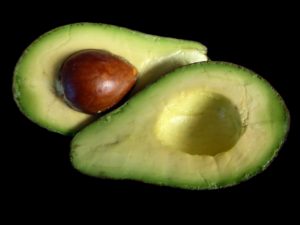
Recommended Daily Value: 5mg
Avocados
Mushrooms
Sunflower Seeds
Sweet Potato
Potassium
Your body needs potassium to:
- Build proteins
- Break down and use carbohydrates
- Build muscle
- Maintain normal body growth
- Control the electrical activity of the heart
- Control the acid-base balance
Potassium in Diet
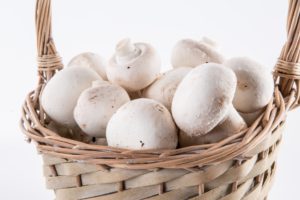
Recommended Daily Value: 4700mg/day
| Rank | Food | Potassium (mg) | Calories per 100g | Ratio of Calories to 1 mg of Potassium |
|---|---|---|---|---|
| 1 | Spinach (Swiss Chard, Kale, Collards) | 588 mg | 23 cal. | 0.03:1 |
| 2 | Mushrooms | 318 mg | 23 cal. | 0.06 |
| 3 | Tomatoes | 237 mg | 18 cal. | 0.07 |
| 4 | Squash, Winter | 350 mg | 34 cal. | 0.09 |
| 5 | Broccoli | 316 mg | 34 cal. | 0.10 |
| 6 | Cantaloupe | 267 mg | 34 cal. | 0.12 |
| 7 | Potatoes | 421 mg | 77 cal. | 0.18 |
| 8 | Apricots | 259 mg | 48 cal. | 0.18 |
| 9 | Kiwi | 312 mg | 61 cal. | 0.19 |
| 10 | Bananas | 358 mg | 89 cal. | 0.24 |
| 11 | Sweet Potatoes | 337 mg | 86 cal. | 0.25 |
| 12 | Citrus Fruits (orange) | 181 mg | 47 cal. | 0.25 |
| 13 | Beans, White (Soy, Lima, Kidney, Great Northern, Pinto) | 230 mg | 69.23 cal. | 0.30 |
| 14 | Avocados | 485 mg | 160 cal. | 0.32 |
| 15 | Peas | 244 mg | 81 cal. | 0.33 |
| 16 | Nuts (cashew) | 565 mg | 574 cal. | 1.01 |
Protein
You need protein in your diet to help your body repair cells and make new ones. Protein is also important for growth and development in children, teens, and pregnant women.
Protein in Diet
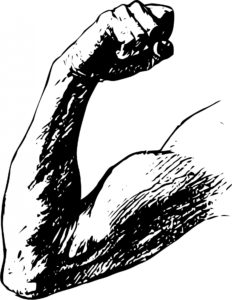
Recommended Daily Value: 56g
To find the correct amount of protein you need use this formula:
(ideal body weight in lbs x 4)/10. = grams a day.
ex. (150lbs. x 4)/10 = 60g a day.
| Rank | Food | Protein (grams) | Calories per 100g | Ratio of Calories to 1 gram of Protein |
|---|---|---|---|---|
| Vegetables | ||||
| 1 | Mushrooms, White | 3.09 g | 22 cal. | 7.11:1 |
| 2 | Spinach | 2.86 g | 23 cal. | 8.04 |
| 3 | Cabbage Chinese Bok Choy | 1.5 g | 13 cal. | 8.66 |
| 4 | Asparagus | 2.20 g | 20 cal. | 9.09 |
| 5 | Tofu firm (soybean) | 8.08 g | 76 cal. | 9.40 |
| 6 | Bamboo Shoots | 2.6 g | 27 cal. | 10.38 |
| 7 | Edamame (soybean) | 10.25 g | 110 cal. | 10.73 |
| 8 | Brussels Sprouts | 3.83 g | 43 cal. | 11.22 |
| 9 | Broccoli | 2.82 g | 34 cal. | 12.05 |
| 10 | Edible Podded Peas (Sugar Snap & Snowpeas) | 3.27 g | 42 cal. | 12.84 |
| 11 | Cauliflower | 1.92 g | 25 cal. | 13.02 |
| 12 | Squash, Summer, yellow | 1.21 g | 16 cal. | 13.22 |
| 13 | Lettuce | 0.9 g | 14 cal. | 15.55 |
| 14 | Okra | 1.93 g | 33 cal. | 17.09 |
| 15 | Peas Green | 5.18 g | 97 cal. | 18.72 |
| 16 | Cabbage Green | 1.28 g | 25 cal. | 19.53 |
| 17 | Lima Beans | 6.59 g | 133.50 cal. | 20.25 |
| 18 | Cucumber | 0.59 g | 12 cal. | 20.33 |
| 19 | Tomato | 0.88 g | 18 cal. | 20.45 |
| 20 | Cabbage Red | 1.43 g | 31 cal. | 21.67 |
| 21 | Celery | 0.69 g | 16 cal. | 23.18 |
| 22 | Radish | 0.68 g | 16 cal. | 23.52 |
| 23 | Beets | 1.61 g | 43 cal. | 26.70 |
| 24 | Blackeye Peas (cowpeas) | 2.95 g | 90 cal. | 30.50 |
| 25 | Turnips | 0.9 g | 28 cal. | 31.11 |
| 26 | Peppers Sweet | 0.99 g | 31 cal. | 31.31 |
| 27 | Peppers Jalapeno | 0.91 g | 29 cal. | 31.86 |
| 28 | Corn | 3.3 g | 108 cal. | 32.72 |
| 29 | Rutabaga | 1.08 g | 37 cal. | 34.25 |
| 30 | Squash, Winter (acorn, butternut, hubbard, pumpkin) | 0.95 g | 34 cal. | 35.78 |
| 31 | Onions | 1.1 g | 40 cal. | 36.36 |
| 32 | Potato White (yellow skin) | 2.02 g | 77 cal. | 38.11 |
| 33 | Carrots | 0.93 g | 41 cal. | 44.08 |
| 34 | Potato Sweet | 1.57 g | 86 cal. | 54.77 |
| 35 | Avocados | 2 g | 160 cal. | 80 |
| Rank | Food | Protein (grams) | Calories per 100g | Ratio of Calories to 1 gram of Protein |
| Fruit | ||||
| 1 | Lemon | 1.1 g | 29 cal. | 26.36:1 |
| 2 | Guava | 2.55 g | 68 cal. | 26.66 |
| 3 | Starfruit | 1.04 g | 31 cal. | 29.80 |
| 4 | Blackberries | 1.39 g | 43 cal. | 30.93 |
| 5 | Apricots | 1.4 g | 48 cal. | 34.28 |
| 6 | Cantaloupe | 0.84 g | 34 cal. | 40.47 |
| 7 | Nectarines | 1.06 g | 44 cal. | 41.50 |
| 8 | Peaches | 0.91 g | 39 cal. | 42.85 |
| 9 | Lime | 0.70 g | 30 cal. | 42.85 |
| 10 | Raspberries | 1.2 g | 52 cal. | 43.33 |
| 11 | Strawberries | 0.67 g | 32 cal. | 47.76 |
| 12 | Watermelon | 0.61 g | 30 cal. | 49.18 |
| 13 | Pomegranate | 1.67 g | 83 cal. | 49.70 |
| 14 | Oranges | 0.94 g | 47 cal. | 50 |
| 15 | Pummelo | 0.76 g | 38 cal. | 50 |
| 16 | Grapefruit | 0.63 g | 32 cal. | 50.79 |
| 17 | Kiwi | 1.14 g | 61 cal. | 53.50 |
| 18 | Cherries | 1.06 g | 63 cal. | 59.43 |
| 19 | Plums | 0.70 g | 46 cal. | 65.71 |
| 20 | Honeydew Melon | 0.54 g | 36 cal. | 66.66 |
| 21 | Mango | 0.82 g | 60 cal. | 73.17 |
| 22 | Blueberries | 0.74 g | 57 cal. | 77.02 |
| 23 | Avocados | 2 g | 160 cal. | 80 |
| 24 | Bananas | 1.09 g | 89 cal. | 81.65 |
| 25 | Pineapple | 0.54 g | 50 cal. | 92.59 |
| 26 | Grapes | 0.72 g | 69 cal. | 95.83 |
| 27 | Cranberries | 0.39 g | 46 cal. | 117.94 |
| 28 | Persimmon | 0.58 g | 70 cal. | 120.68 |
| 29 | Quince | 0.40 g | 57 cal. | 142.50 |
| 30 | Apple | 0.26 g | 52 cal. | 200 |
| Rank | Food | Protein (grams) | Calories per 100g | Ratio of Calories to 1 gram of Protein |
| Nuts & Seeds | ||||
| 1 | Pumpkin and Squash Seeds Whole | 18.55 g | 446 cal. | 24.04:1 |
| 2 | Peanuts | 23.68 g | 585 cal. | 24.70 |
| 3 | Sunflower Seeds | 22.78 g | 570 cal. | 25.02 |
| 4 | Pistachios | 20.95 g | 567 cal. | 27.06 |
| 5 | Almonds | 20.96 g | 598 cal. | 28.53 |
| 6 | Chia Seeds | 16.54 g | 486 cal. | 29.38 |
| 7 | Cashews | 15.31 g | 574 cal. | 37.49 |
| 8 | Walnuts | 15.23 g | 654 cal. | 42.94 |
| 9 | Brazil Nuts | 14.32 g | 656 cal. | 45.81 |
| 10 | Acorns | 8.1 g | 509 cal. | 62.83 |
| 11 | Pecans | 9.5 g | 710 cal. | 74.73 |
| 12 | Macadamia Nuts | 7.79 g | 718 cal. | 92.16 |
| Rank | Food | Protein (grams) | Calories per 100g | Ratio of Calories to 1 gram of Protein |
| Grains | ||||
| 1 | Kamut - Nature’s Path Organic Kamut Puffs | 12.5 g | 312.50 cal. | 25:1 |
| 2 | Quinoa | 4.4 g | 120 cal. | 27.27 |
| 3 | Wheat - Quaker Oats Steel Cut Oats Quick 3-Minute | 12 g | 340 cal. | 28.33 |
| 4 | Brown Rice | 2.56 g | 110.20 cal. | 43.04 |
Selenium
Helps make special proteins, called antioxidant enzymes which prevent cell damage. Protecting you after a vaccination.
Selenium in Diet
Selenium is used by the thyroid gland and every cell that uses thyroid hormone. It may inhibit Hashimoto’s disease, in which the body’s own thyroid cells are attacked as alien. It reduces the effects of mercury toxicity.
Selenium Biological Role
 1/2 of a Brazil Nut has about 60-97% of the recommended daily value of selenium.
1/2 of a Brazil Nut has about 60-97% of the recommended daily value of selenium.
Sodium (to avoid)
The body uses sodium to control blood pressure and blood volume. Your body also needs sodium for your muscles and nerves to work properly.
Sodium occurs naturally in most foods.
Too much sodium causes high blood pressure and a serious buildup of fluid in people with heart failure, cirrhosis of the liver, or kidney disease.
Sodium in Diet
Limit to less than 500mg a day.
*Any food excluding most whole vegetables and fruits that has more than 100mg sodium per 100 calories should be avoided.
| Rank | Food to Avoid | Sodium (mg) | Calories per 100g | Ratio of Calories to 1 mg of Sodium |
|---|---|---|---|---|
| 1 | Beet Greens | 226 mg | 22 cal. | 0.09:1 |
| 2 | Olives | 981.3 mg | 116.9 cal. | 0.11:1 |
Vitamin D (found in fortified Baby Calf Growth Formula aka Milk)
Ten minutes of sunshine on your arms provide 10,000 IUs of vitamin D.
Factors that decrease vitamin D activation in the skin include sunscreen, colder seasons, latitudes further from the equator, and darker skin color.

Recommended Daily Value: 5mcg / 200IU
*Irradiated means exposed to sunlight, this is solar radiation not nuclear radiation.
**Some amounts vary too much to list.
| Rank | Food | Vitamin D Daily Value | Calories per 100g | Ratio of Calories to 1% of Daily Value |
|---|---|---|---|---|
| 1 | *Irradiated Mushrooms - Monterey High In Vitamin D Mushrooms | 117% | 20 cal. | 0.17:1 |
| 2 | Soy Milk - Silk Light Vanilla | 12% | 33 cal. | 2.75 |
| 3 | Mushrooms | 2% | 22 cal. | 11 |
| - | **Vitamin D Supplement | - | - | - |
| - | **Sunlight - No more than 10 minutes or you could get skin cancer. | - | - | - |
Vitamin B12 (found in Animal Flesh)
A water-soluble vitamin that has a key role in the normal functioning of the brain and nervous system, and the formation of red blood cells.
Vitamin B-12
Symptoms of deficiency may include fatigue, weakness, tingling in the arms and legs, digestive disturbances, and a sore tongue, and may lead to anemia and more serious disorders of the blood and nervous system.
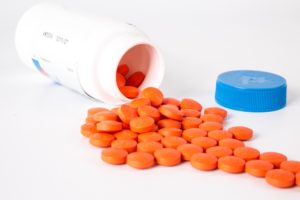
Recommended Daily Value: 2.4mcg
Back to Table of Contents
Zinc
Helps the immune system fight off invading bacteria and viruses. The body also needs zinc to make proteins and DNA, the genetic material in all cells. During pregnancy, infancy, and childhood, the body needs zinc to grow and develop properly. Zinc also helps wounds heal and is important for proper senses of taste and smell.
Zinc – Fact Sheet for Consumers
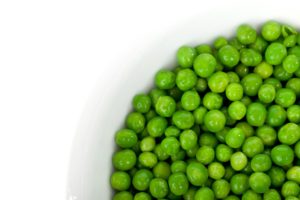
Men Zinc Recommended Daily Value: 11mg
Women Zinc Recommended Daily Value: 8mg
| Rank | Food | Zinc (mg) | Calories per 100g | Ratio of Calories to 1 mg of Zinc |
|---|---|---|---|---|
| 1 | Peas, Green, raw | 1.2 mg | 81 cal. | 67.5:1 |
| 2 | Cabbage, Napa | 0.2 mg | 14 cal. | 70 |
| 3 | Lettuce, Iceberg | 0.2 mg | 14 cal. | 70 |
| 4 | Kale | 0.6 mg | 49 cal. | 81.66 |
| 5 | Soy Beans | 1.3 mg | 109 cal. | 83.84 |
| 6 | Broccoli | 0.4 mg | 34 cal. | 85 |
| 7 | Lettuce, Romaine or Cos | 0.2 mg | 17 cal. | 85 |
| 8 | Cowpeas, Blackeye Peas | 1.3 mg | 116 cal. | 89.23 |
| 9 | Lentils | 1.3 mg | 116 cal. | 89.23 |
| 10 | Cashews | 5.8 mg | 553 cal. | 95.34 |
| 11 | Oatmeal, dry | 3.6 mg | 379 cal. | 105.27 |
| 12 | Garbanzo Beans | 1.5 mg | 164 cal. | 109.33 |
| 13 | Peas, Green, cooked, boiled | 0.7 mg | 78 cal. | 111.42 |
| 14 | Pasta, Whole Wheat | 1.3 mg | 149 cal. | 114.61 |
| 15 | Quinoa | 1 mg | 123 cal. | 123 |
| 16 | Cabbage, Green | 0.2 mg | 25 cal. | 125 |
| 17 | Kidney Beans | 1.0 mg | 127 cal. | 127 |
| 18 | Peas, Snow or Sugar Snap | 0.3 mg | 42 cal. | 140 |
| 19 | Bread, Whole Wheat | 1.8 mg | 252 cal. | 140 |
| 20 | Pinto Beans | 1.0 mg | 143 cal. | 143 |
| 21 | Cabbage, Red | 0.2 mg | 31 cal. | 155 |
| 22 | Brazil Nuts | 4.1 mg | 659 cal. | 160.73 |
| 23 | Corn | 0.5 mg | 86 cal. | 172 |
| 24 | Almonds | 3.1 mg | 579 cal. | 186.77 |
| 25 | Onions | 0.2 mg | 40 cal. | 200 |
| 26 | Carrots | 0.2 mg | 41 cal. | 205 |
| 27 | Walnuts | 3.1 mg | 654 cal. | 210.96 |

